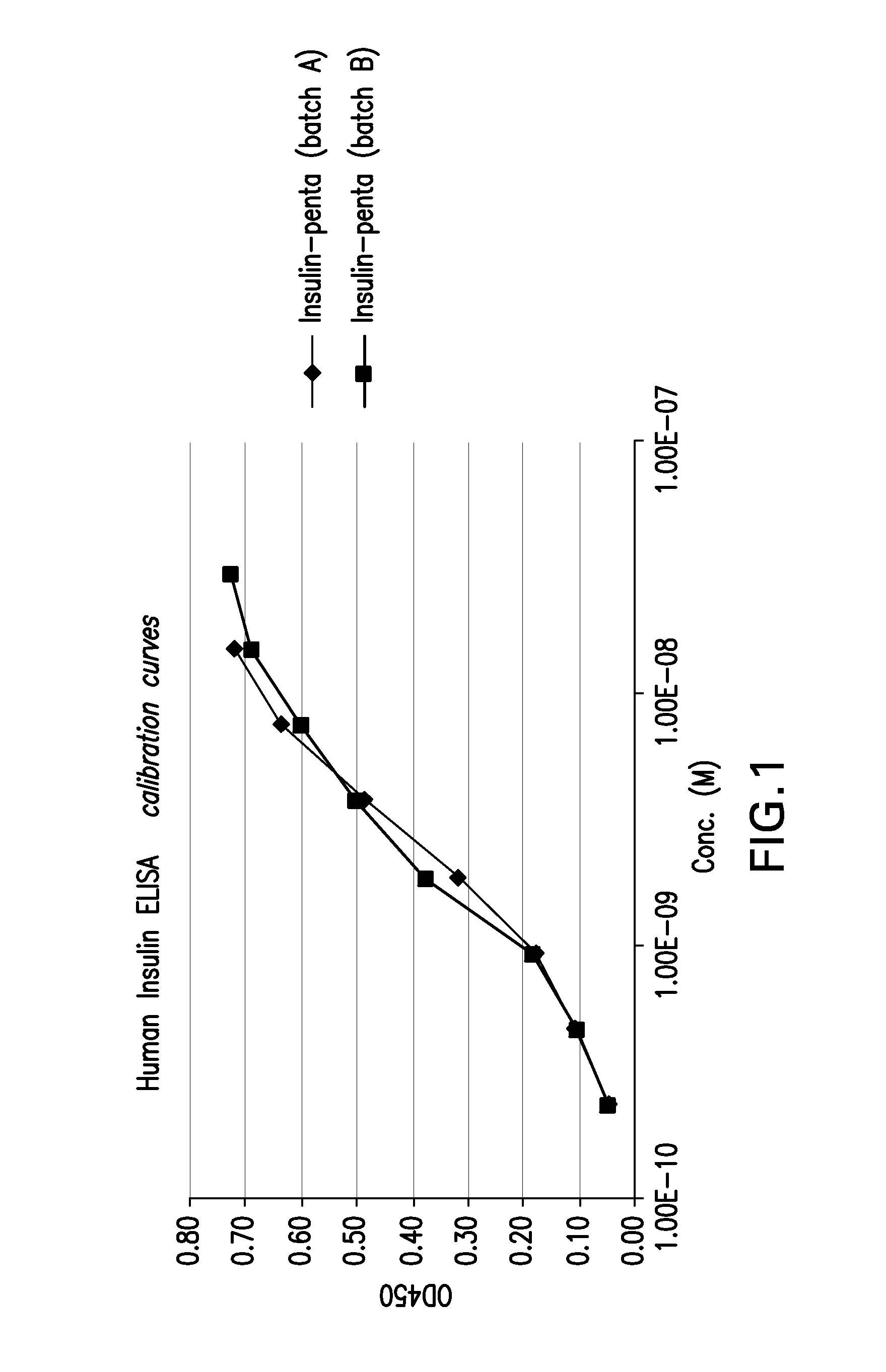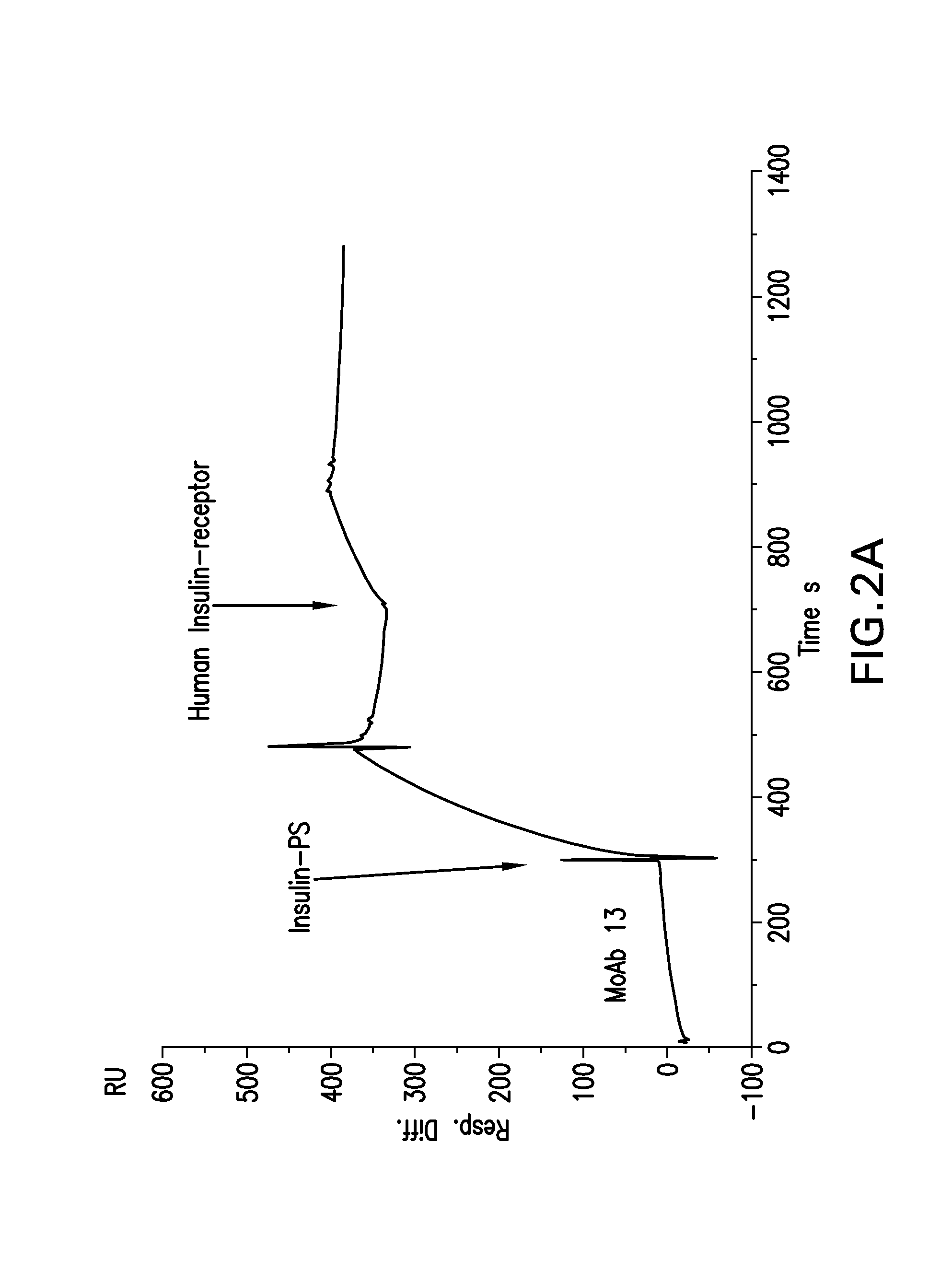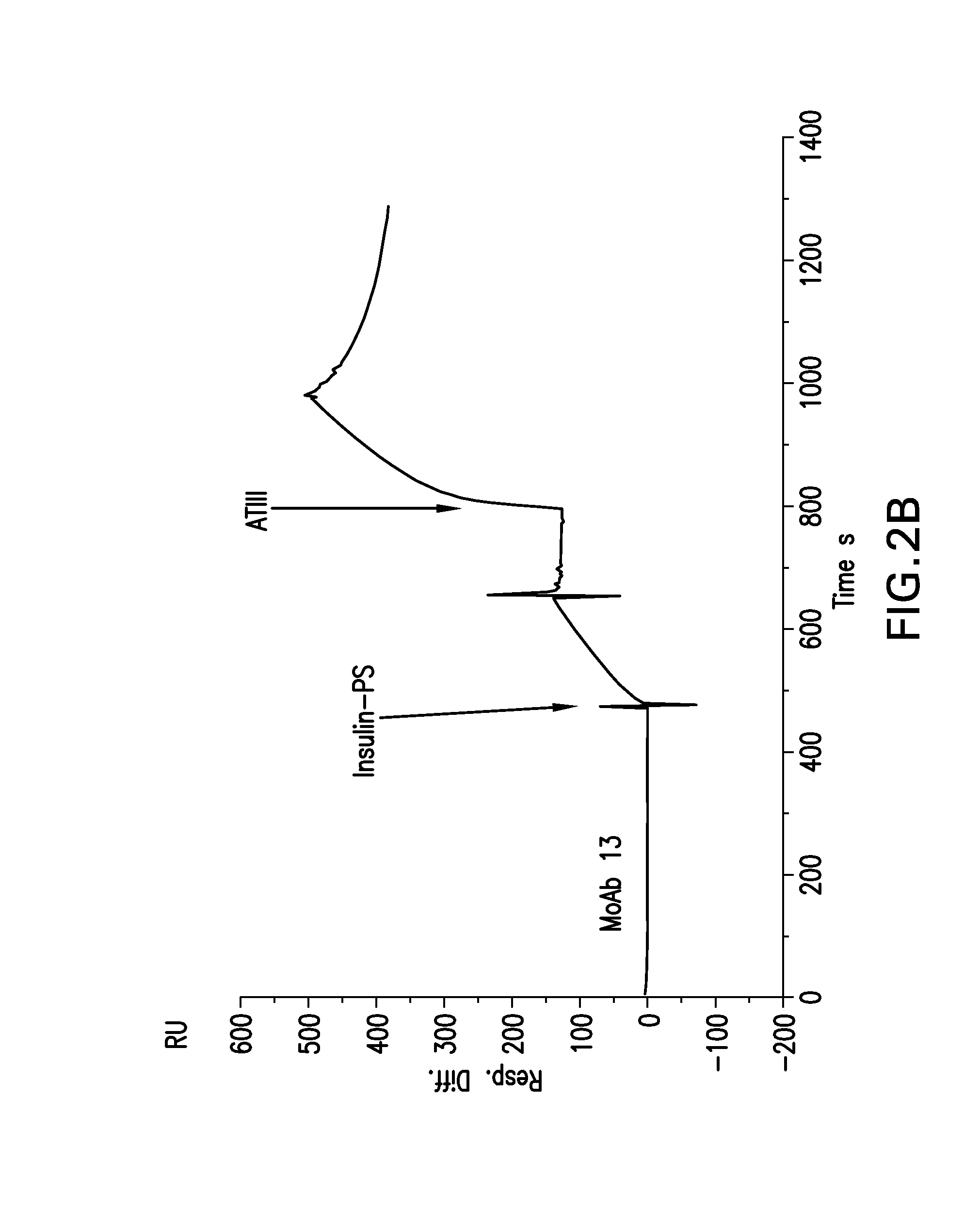Conjugates of a polypeptide and a pentasaccharide
- Summary
- Abstract
- Description
- Claims
- Application Information
AI Technical Summary
Benefits of technology
Problems solved by technology
Method used
Image
Examples
example 1
6-(2-Iodo-acetylamino)-hexanoic acid (2)
[0187]To a suspension of 6-amino-hexanoic acid (1) (0.37 g, 2.8 mmol) in 1,4-dioxane (60 mL) was added iodoacetic anhydride (0.50 g, 1.4 mmol). The reaction mixture was stirred at 50° C. for 3 h and for 16 h at ambient temperature after which TLC analysis (CH2Cl2 / MeOH / AcOH, 98 / 10 / 1, v / v / v) revealed complete conversion of compound 1 into a less lyophilic product. EtOAc (100 mL) was added and the reaction mixture was washed with 0.10 M aqueous HCl solution (50 mL). The organic layer was then washed twice with brine (50 mL) and the combined water layers were extracted twice with EtOAc (75 mL). The combined organic layers were dried (MgSO4) and concentrated in vacuo. The residue was chromatographed on silica gel (CH2Cl2 / MeOH / AcOH, 98 / 10 / 1, v / v / v) to give 6-(2-iodo-acetylamino)-hexanoic acid (2) (0.45 g, >100%). 1H NMR (MeOD): δ3.67 (s, 2H), 3.17 (t, 2H), 2.29 (t, 2H), 1.66-1.33 (m, 6H).
example 2
6-(2-Iodo-acetylamino)-hexanoic acid 2,5-dioxo-pyrrolidin-1-yl ester (3)
[0188]To a solution of 6-(2-iodo-acetylamino)-hexanoic acid (2) (0.20 g, 0.67 mmol) in THF (10 mL) was added N-hydroxysuccinimide (85 mg, 0.74 mmol) and N,N′-dicyclohexylcarbodiimide (0.21 g, 1.0 mmol). The reaction mixture was stirred in the dark for 16 h. When TLC analysis (EtOAc / Hep / AcOH, 80 / 20 / 1, v / v / v) revealed complete conversion into the activated ester 3, seven drops of acetic acid were added. The mixture was then stored in the freezer overnight (−20° C.). The crude mixture was filtered and the filtrate was concentrated in vacuo. The crude product was purified by column chromatography (EtOAc / Hep / AcOH, 40 / 60 / 5→20 / 80 / 5, v / v / v) and concentration of the appropriate fractions gave N-hydroxysuccinimide ester derivative 3 (0.18 g, 67%). 1H NMR (MeOD): δ3.67 (s, 2H), 3.18 (t, 2H), 2.82 (s, 4H), 2.63 (t, 2H), 2.0-1.0 (m, 6H).
example 3
Compound 4
[0189]To a suspension of recH insulin (50 mg, 8.6 μmol) in DMF (15 mL) was added H2O (9.0 mL) until the solution became clear. The solution was stirred for 15 min. to adjust to room temperature. The pH of the solution was adjusted to 10 by adding dropwise 0.1 M NaOH in H2O. After this, the reaction flask was wrapped in tin foil. A solution of 3 (5.0 mg, 8.6 μmol) in DMF (1.0 mL) was added dropwise to the reaction mixture in 1 min. The reaction mixture was stirred by using a magnetic stirring bar and the pH was kept at 10. After 30 min an excess of 0.1% TFA in H2O (5.0 mL) was added to quench the reaction. H2O (200 mL) was added and the reaction mixture was lyophilised to give 4 (60 mg, >100%, max. 8.6 μmol). HPLC (Shimadzu, reversed phase) analysis by starting with 80% eluent A (0.1% TFA in H2O) and 20% eluent B (ACN) for 5 min., then applying a gradient to 20% eluent A and 80% eluent B in 30 min. revealed the presence of 45% of the monosubstituted product (recH insulin Rt...
PUM
| Property | Measurement | Unit |
|---|---|---|
| Molar density | aaaaa | aaaaa |
| Volume | aaaaa | aaaaa |
| Molar density | aaaaa | aaaaa |
Abstract
Description
Claims
Application Information
 Login to View More
Login to View More - R&D
- Intellectual Property
- Life Sciences
- Materials
- Tech Scout
- Unparalleled Data Quality
- Higher Quality Content
- 60% Fewer Hallucinations
Browse by: Latest US Patents, China's latest patents, Technical Efficacy Thesaurus, Application Domain, Technology Topic, Popular Technical Reports.
© 2025 PatSnap. All rights reserved.Legal|Privacy policy|Modern Slavery Act Transparency Statement|Sitemap|About US| Contact US: help@patsnap.com



